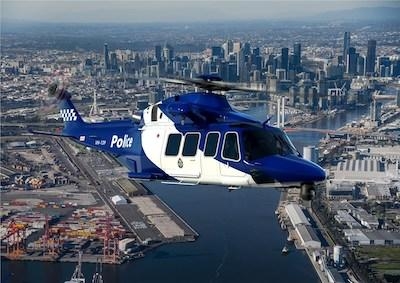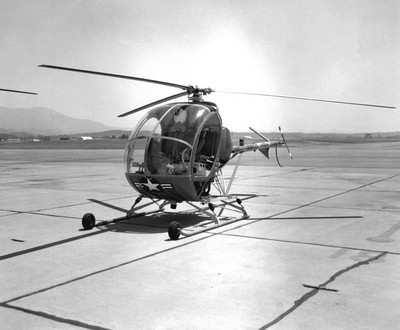Reminds Owners And Operators To Review Their Fuel Systems For Regulatory Compliance
The FAA has issued a Safety Alert for Operators (SAFO) concerning compliance standards for helicopter CRFSs. These CRFS safety standards reside in Title 14 of the Code of Federal Regulations (14 CFR) Parts 27 and 29, and in Title 49 of the United States Code (49 U.S.C.) § 44737 (2018).

On November 2, 1994, helicopter fuel system crash resistance became a regulatory requirement in Amendment 27-30 of 14 CFR part 27 and Amendment 29-35 of 14 CFR part 29. The amendments included §§ 27.952 and 29.952, along with related regulatory sections of part 27 and part 29. The regulations applied only to newly type-certificated rotorcraft. Since the regulations were not retroactive, no requirement existed to incorporate their requirements into existing fleets. The regulations also did not apply to newly manufactured rotorcraft produced under a type design that existed before the November 2, 1994, effective date of the regulations. The design requirements included in part 27 of Amendment 27-30 and part 29 of Amendment 29-35 are intended to increase safety in the event of a survivable crash by either decreasing the likelihood of, or delaying, post-crash fires. The intent of both amendments is to (1) minimize crash-induced fuel leaks during and after a crash, and (2) increase the time
occupants have to egress the aircraft following a crash.
On October 5, 2018, 49 U.S.C. § 44737 (2018) became public law; it applies only to newly manufactured rotorcraft. Although the applicable regulations adopted in 1994 did not apply retroactively to rotorcraft type certificated before then, the statute mandates that the requirements apply broadly to all newly-manufactured rotorcraft for which manufacture is completed on or after 18 months from October 5, 2018, irrespective of the date of type certification. This law lists helicopter fuel system safety requirements for operation of rotorcraft in the National Airspace System. The requirements take effect April 5, 2020, 18 months after the date of enactment to include excerpts from §§ 27.952 and 29.952, §§ 27.963 and 29.963, and §§ 27.975 and 29.975. The requirements are consistent with recommendations provided to the FAA by the Aviation Rulemaking Advisory Committee Rotorcraft Occupant Protection Working Group to improve rotorcraft fuel system crash resistance. The 14
CFR part 21, 27, and 29 certification approval process for fuel systems does not change with the establishment of the 49 U.S.C. § 44737 (2018) requirements.
The FAA says Owners and operators should review the fuel system crash resistance capability requirements applicable to their helicopters.

Older model helicopters (pre-Nov. 2, 1994 type designs) manufactured prior to April 5, 2020: While these helicopters are not covered by either 49 U.S.C. § 44737 (2018) or regulations to meet the CRFS safety standards of 14 CFR part 27 through Amendment 27-30 and part 29 through Amendment 29-35, the FAA recommends owners and operators install fuel systems that improve the fuel system crash resistance capability of their helicopters.
Newer model helicopters (Nov. 2, 1994 and later type designs) manufactured after Nov. 2, 1994 but prior to April 5, 2020: These helicopters are not covered by 49 U.S.C. § 44737 (2018), but they are required by regulation to meet the full CRFS safety standards of 14 CFR part 27 through Amendment 27-30 and part 29 through Amendment 29-35. The FAA recommend owners and operators ensure that their helicopters are in fact compliant with the CRFS standards.
Helicopters of any type design manufactured on or after April 5, 2020:
These are covered rotorcraft subject to 49 U.S.C. § 44737 (2018). Operation is prohibited unless the helicopter meets the statutory requirements, which incorporate some of the CRFS safety standards of 14 CFR part 27 through Amendment 27-30 or part 29 through Amendment 29-35. The design of helicopter models type-certificated on or after Nov. 2, 1994 should already exceed statutory requirements. The design of helicopter models type-certificated before Nov. 2, 1994, will likely need to be updated in order to meet statutory requirements.
The FAA maintains a list of helicopters compliant with full CRFS safety standards of 14 CFR part 27 through Amendment 27-30 and part 29 through Amendment 29-35. A separate list of helicopters that meet minimum CRFS requirements established by 49 U.S.C. § 44737 (2018), but do not comply with full CRFS safety standards of 14 CFR part 27 through Amendment 27-30 or part 29 through Amendment 29- 35 is also maintained. The second list further identifies helicopters that exceed 49 U.S.C. § 44737 (2018) minimum requirements and comply with other related CRFS regulatory sections. Operators can access these lists by navigating to the current version of Special Airworthiness Information Bulletin (SAIB) number SW-17-31.
(Source: FAA. Images from file)
 ANN's Daily Aero-Term (04.26.24): DETRESFA (Distress Phrase)
ANN's Daily Aero-Term (04.26.24): DETRESFA (Distress Phrase) ANN's Daily Aero-Linx (04.26.24)
ANN's Daily Aero-Linx (04.26.24) Airborne 04.22.24: Rotor X Worsens, Airport Fees 4 FNB?, USMC Drone Pilot
Airborne 04.22.24: Rotor X Worsens, Airport Fees 4 FNB?, USMC Drone Pilot Airborne 04.24.24: INTEGRAL E, Elixir USA, M700 RVSM
Airborne 04.24.24: INTEGRAL E, Elixir USA, M700 RVSM Airborne-NextGen 04.23.24: UAVOS UVH 170, magni650 Engine, World eVTOL Directory
Airborne-NextGen 04.23.24: UAVOS UVH 170, magni650 Engine, World eVTOL Directory




